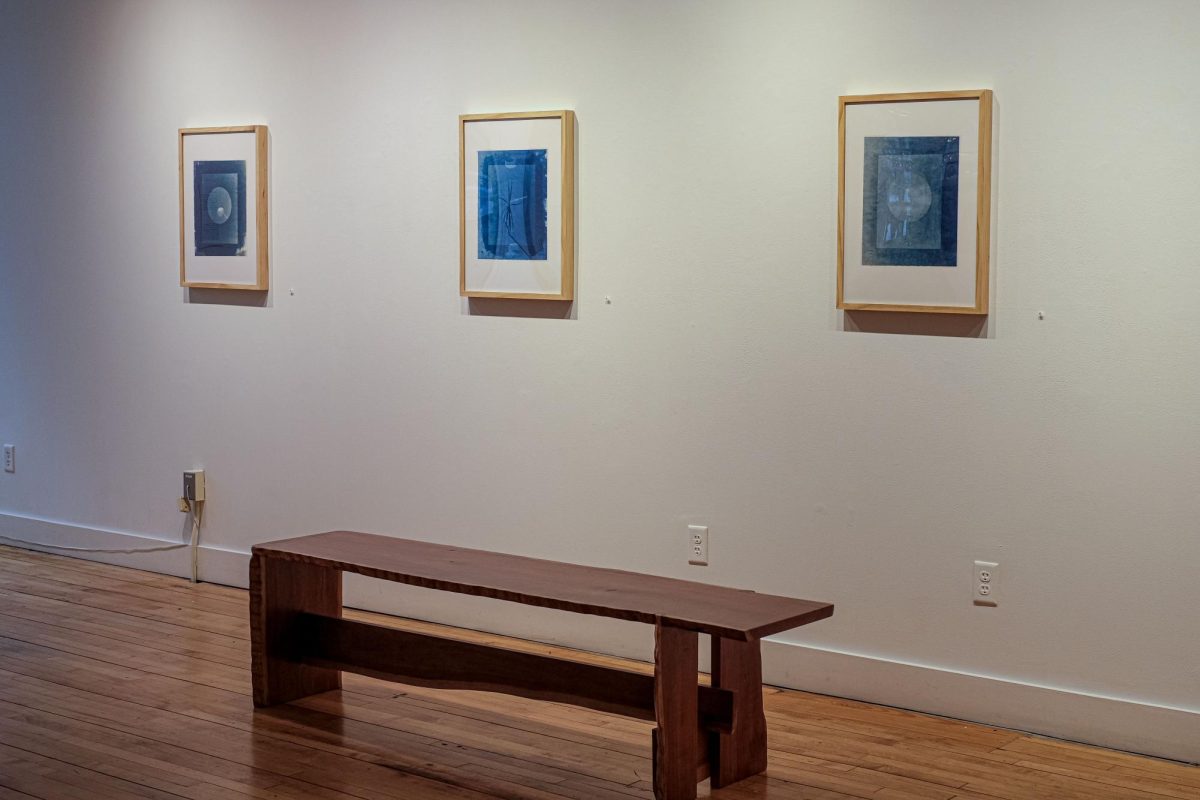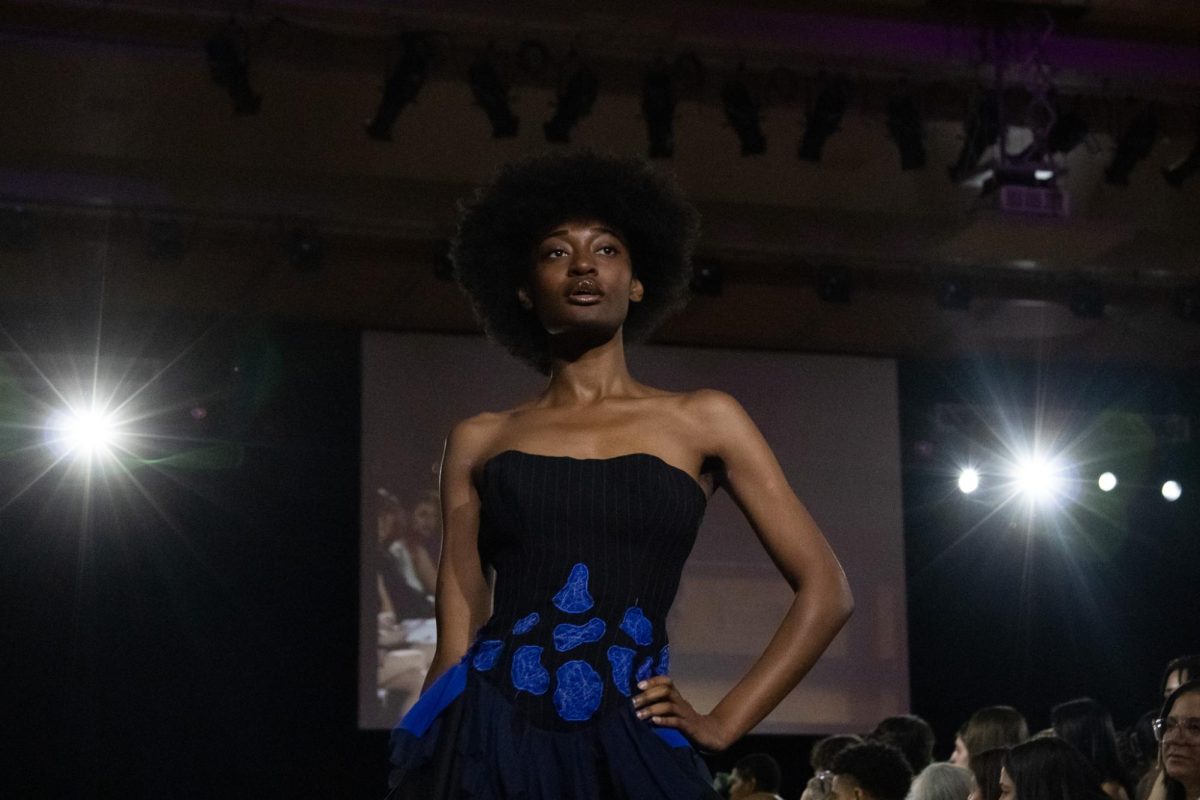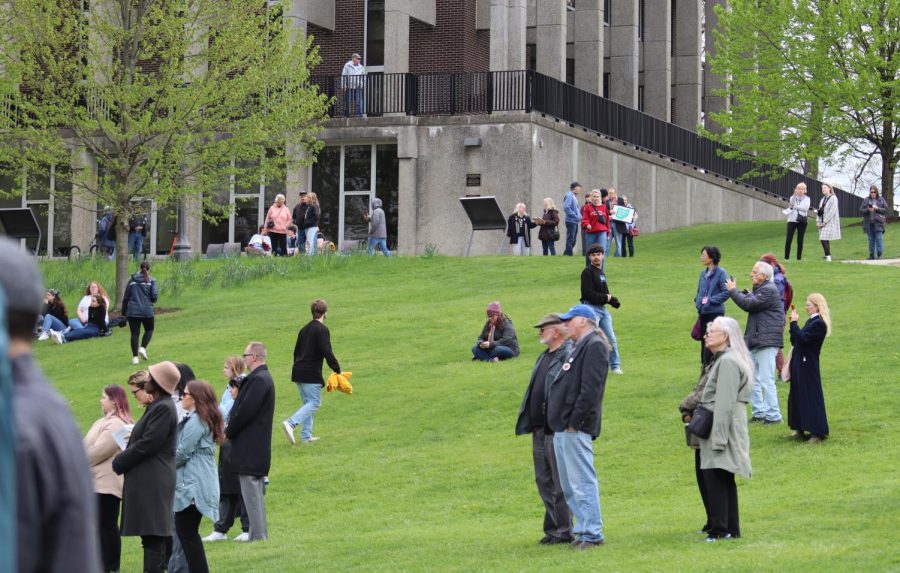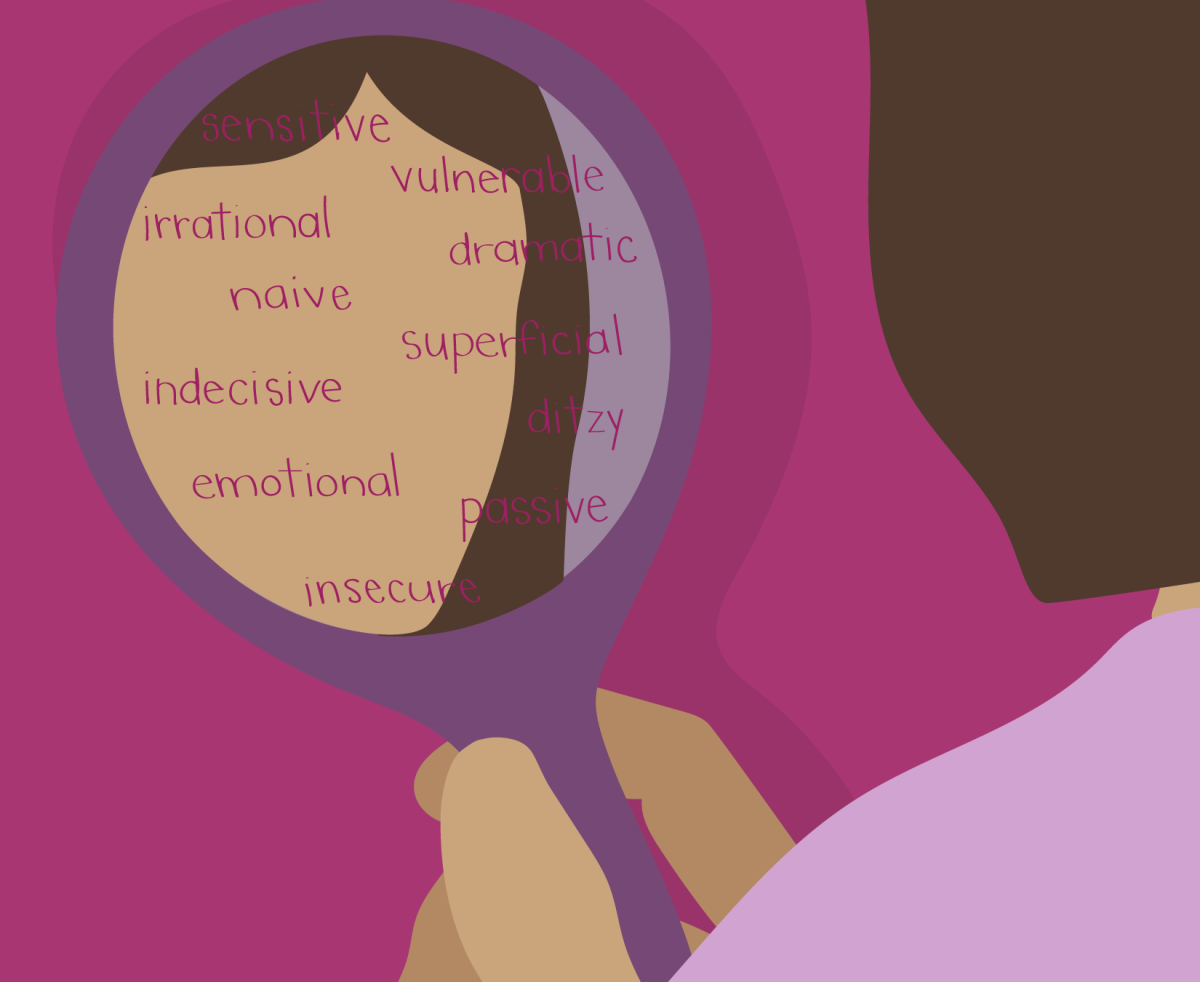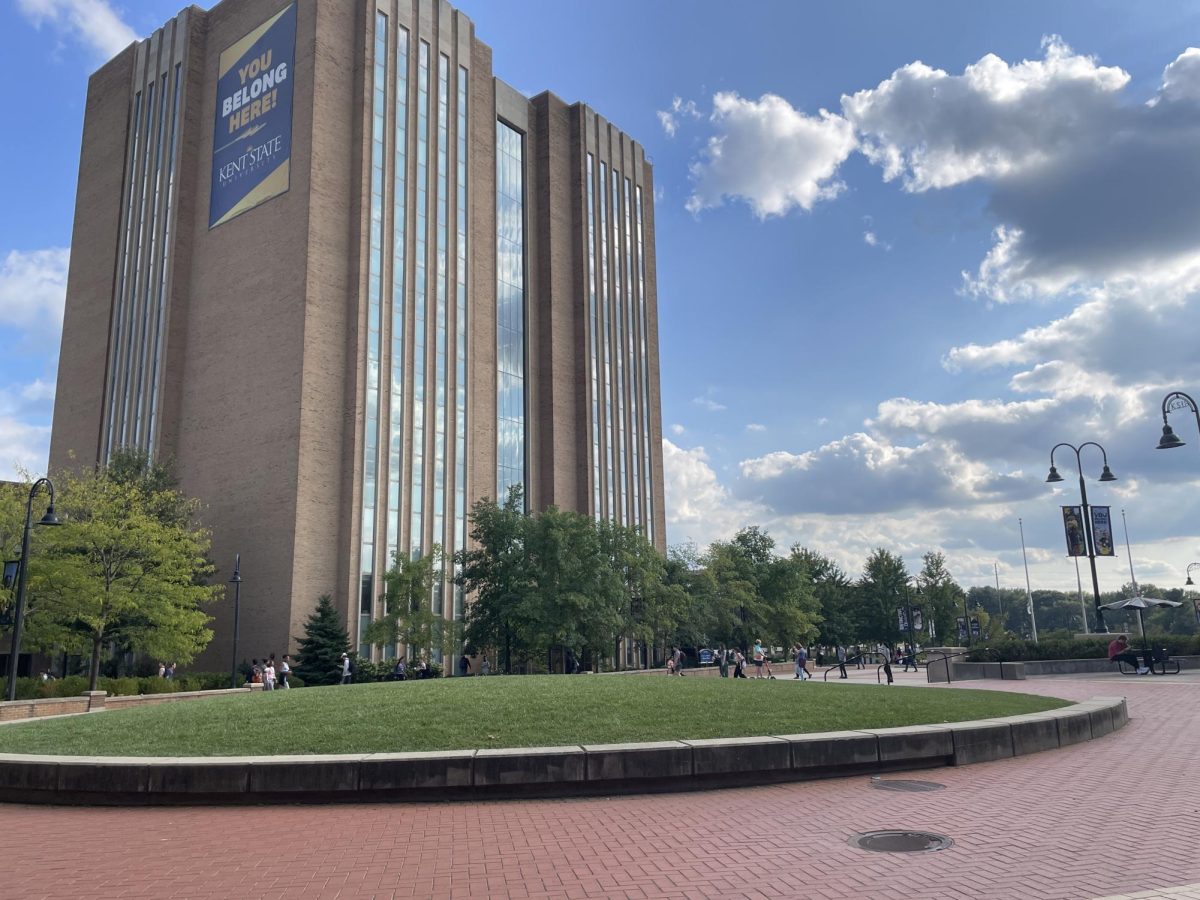“The truth is out there (No, really…)” by Christine Zuercher leaves patrons wondering just how thin the line is between fiction and reality.
On display in the KSU Downtown Gallery, the exhibit includes 15 different cyanotypes accompanied by a short video with one central theme: UFOs.
Zuercher, a Dayton, Ohio, based artist, sourced imagery from screenshots of old YouTube videos of fake or real UFO sightings with the goal of leaving the viewer wondering the true difference between what is fact and what is fiction in a world where both of those ideas are constantly changing. Zuercher wants every viewer to leave the gallery wondering, “Who are we to decide? What’s real? What’s fake? It can be really hard to tell.”
What are cyanotypes?The Smith College Museum of Art defines a cyanotype as a cameraless process in which the photographer lays an object on a piece of photo paper coated with a solution of iron salts. The photographer then places a piece of plexiglass on top of the photo paper and the object. The plexiglass acts as a placeholder when the photographer exposes the image with natural sunlight or an enlarger. The photograph is removed and washed with water. The result is an image in the famous blue hue that cyanotypes have been named after.
Zuercher’s medium of choice was no accident. Zuercher chose cyanotypes as a callback to the Voyager 1 probe’s images of Earth, in which Earth was just a tiny, blue dot. Zuercher said she is fascinated by Carl Sagan’s interpretation of those images in his book, “Pale Blue Dot.”
“Our posturings, our imagined self-importance, the delusion that we have some privileged position in the universe, are challenged by this point of pale light,” Sagan wrote in the book. “Our planet is a lonely speck in the great enveloping cosmic dark. In our obscurity, in all this vastness, there is no hint that help will come from elsewhere to save us from ourselves. …To me, it underscores our responsibility to deal more kindly with one another, and to preserve and cherish the pale blue dot, the only home we’ve ever known.”
Zuercher said that blue is an interesting color for a variety of reasons. The mountains look blue when you look at them from afar, much like Earth itself. The ocean, in all its beautiful, terrifying, vast glory, is blue.
“I find this exhibit exciting for its ingenuity and cohesive voice,” said Anderson Turner, the curator of the exhibit.
Turner said the mission of KSU Downtown is to highlight the current, most recent research of regional artists, KSU alumni and faculty. A hotspot for brand new work from exceptional artists from the area, “The truth is out there (No, really…)” is no exception.
Is the line between what is imagined and what is tangible really all that thin?
The KSU Downtown Gallery is located at 141 E. Main St. The exhibit runs from Jan. 19 to March 16, with a public reception on March 1.
Tessa Poulain is a reporter. Contact her at [email protected].













